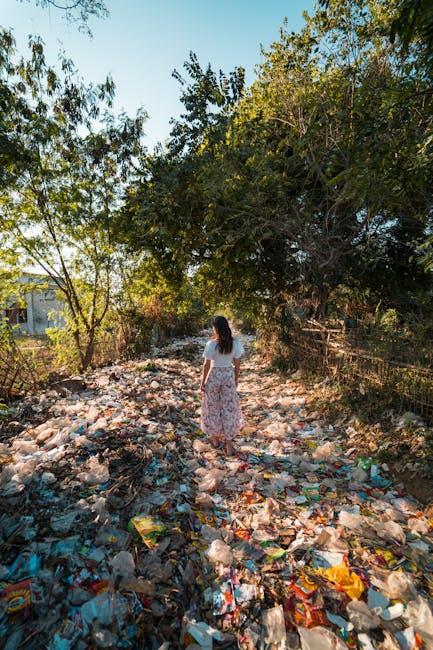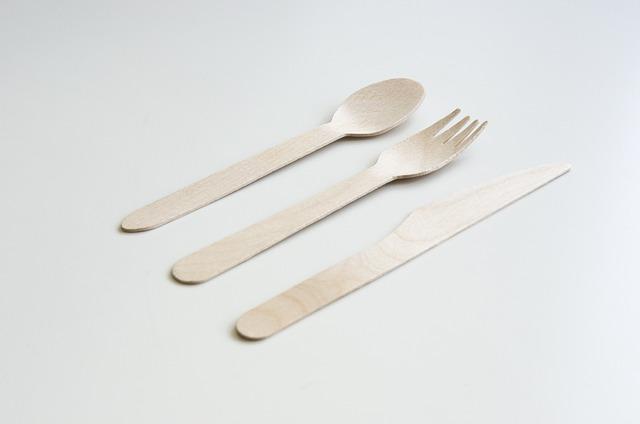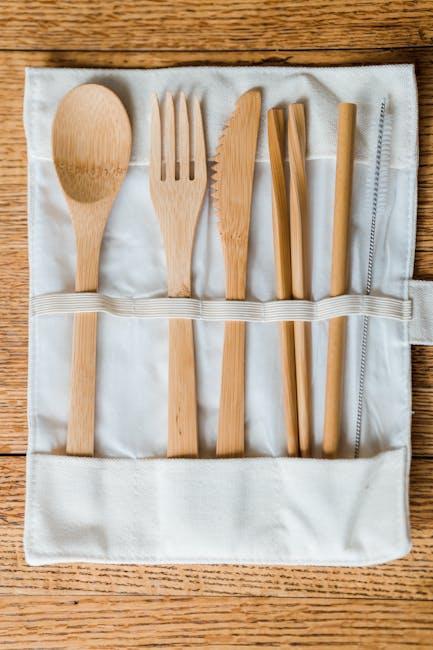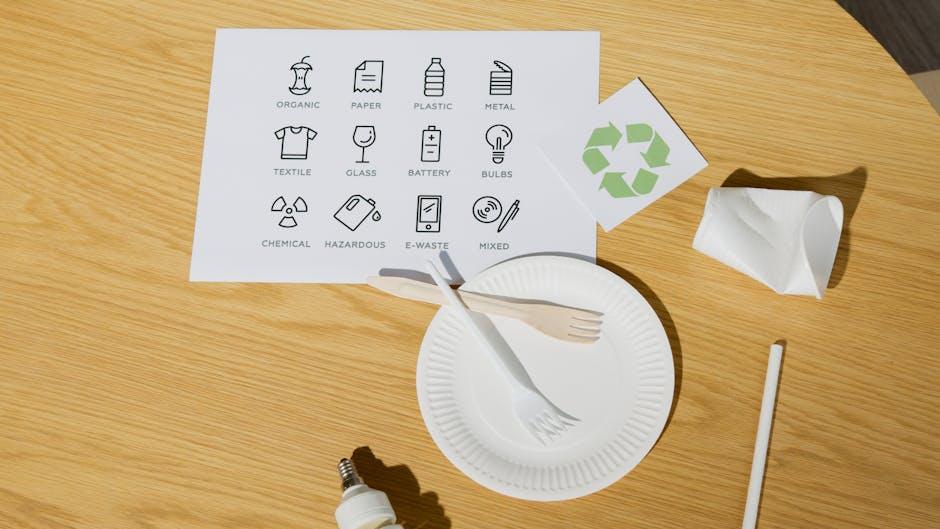In a world increasingly burdened by plastic pollution, the quest for sustainable alternatives to single-use items has taken on critical importance. With millions of tons of plastic waste entering our oceans and landfills each year, the conversation surrounding eco-kind solutions has reached a fervent pitch. Enter biodegradable cutlery and picnicware—seemingly the perfect answer to our disposable dilemmas. But as picnic seasons roll in and outdoor gatherings flourish,it begs the question: are these products truly a viable solution,or merely a fleeting trend in the fight against environmental degradation? This article delves into the effectiveness,implications,and limitations of biodegradable options,exploring whether they can genuinely reduce our reliance on traditional plastics or if they fall short of the mark.Join us on this exploration of innovation and duty as we dissect the role of biodegradable cutlery and picnicware in shaping a more sustainable future.
The Environmental Impact of Single-Use Plastics and the Need for Alternatives
The rise of single-use plastics has brought significant environmental concerns to the forefront of global discussions. These items contribute to waste accumulation, pollute our oceans, and disturb wildlife. As the world grapples with the consequences, it’s become evident that alternatives are not just desirable but necessary. Among those alternatives,biodegradable cutlery and picnicware have gained traction as potential solutions,promising to reduce plastic waste without sacrificing convenience. However, the effectiveness of these products in truly mitigating environmental harm is an ongoing debate.
While biodegradable options are designed to break down under specific conditions, their long-term impact remains uncertain. Factors influencing their degradation include:
- Material Composition: Various materials break down at different rates.
- Environmental Conditions: Temperature and moisture play critical roles.
- Composting Infrastructure: Not all waste facilities can properly process these items.
To further illuminate this issue, consider the following comparison of typical disposable cutlery versus biodegradable alternatives, showcasing both their advantages and potential drawbacks:
| Feature | Disposable Cutlery | Biodegradable Cutlery |
|---|---|---|
| Decomposition Time | Hundreds of years | Months to a few years (under optimal conditions) |
| Production Emissions | higher | Lower, but varies by material |
| End-of-life Impact | Landfill accumulation | Potential compost, but requires specific conditions |

Understanding Biodegradable Materials: What Truly Makes Cutlery and Picnicware Eco-Friendly
To evaluate the eco-friendliness of cutlery and picnicware, it’s essential to understand the components that classify them as biodegradable. Biodegradability refers to the ability of materials to be broken down by microorganisms into natural substances within a reasonable timeframe. Common materials that achieve this include:
- PLA (Polylactic Acid): Derived from renewable resources like corn starch, it decomposes under industrial composting conditions.
- Bagasse: A byproduct of sugarcane, this material offers strength and water-resistance, breaking down quickly in suitable environments.
- Wood: Sourced sustainably, wooden cutlery can biodegrade naturally but varies in how it’s processed and treated.
Though, not all biodegradable items are created equal. The conditions under which they degrade significantly affect their environmental impact. Many biodegradable products require specific temperatures and humidity levels found in industrial compost facilities, which are often inaccessible to the average consumer.Moreover, if disposed of in landfills, these materials can still contribute to methane emissions. A look at the following table illuminates the differences in biodegradability timelines among various materials:
| Material | Decomposition Time | Disposal Method |
|---|---|---|
| PLA | 1-3 months (industrial compost) | Industrial composting |
| Bagasse | 60 days | composting |
| Wood | 2-14 months | Natural decomposition |
| Conventional Plastic | 100-1000 years | Landfill |

Evaluating Performance: Are Biodegradable Options a Practical choice for Outdoor Dining?
When assessing the viability of biodegradable cutlery and picnicware for outdoor dining, it’s crucial to consider both environmental impact and user experience. On one hand,biodegradable options like those made from plant-based materials can significantly reduce the volume of plastic waste that ends up in landfills and oceans.They are designed to decompose more effectively than their traditional plastic counterparts, thus promising a cleaner and greener option. However, the actual rate of decomposition can vary based on environmental conditions, like temperature and moisture, and if they end up in a landfill, the breakdown may be sluggish. This highlights a need for proper disposal education alongside their production.
Moreover, the functionality of biodegradable products is another critical factor. while they often mimic the look and feel of plastic, users may encounter challenges such as durability and performance. These items may not withstand high temperatures or heavy loads as effectively as conventional options do.To illustrate these differences, consider the following table comparing common features:
| Feature | Biodegradable Cutlery | Plastic Cutlery |
|---|---|---|
| Durability | Medium | high |
| Decomposition Time | Weeks to Months | Hundreds of Years |
| Heat Resistance | Moderate | High |
| Cost | Generally higher | generally Lower |
Ultimately, while biodegradable cutlery and picnicware offer a promising solution to the single-use plastics dilemma, their practicality in outdoor dining scenarios demands further evaluation. Tackling issues related to their performance and ensuring proper disposal methods will be essential to maximize their potential benefits and truly replace plastic products in our gatherings.

Making Informed Choices: Recommendations for Sustainable picnicware Selection
when selecting picnicware aimed at reducing our plastic footprint, being mindful of material choices is crucial. Opt for products made from biodegradable materials such as plant starch,sugarcane,or bamboo. These options not only mimic the convenience of traditional plastics but also promise to decompose within a few months after disposal, contributing positively to the surroundings. Consider the following factors to ensure you’re making an informed decision:
- Certifications: Look for compostability certifications, such as ASTM D6400 or EN 13432, which indicate that the products meet industry standards for biodegradability.
- Durability: Ensure that the cutlery and plates are sturdy enough to handle the types of foods you plan to serve, to avoid waste from breakage.
- Local Sourcing: Choose picnicware produced closer to home to reduce transportation emissions, supporting local economies while minimizing your carbon footprint.
In addition to material, the packaging and end-of-life options of your chosen picnicware should also be considered. Many brands now offer minimalist, eco-friendly packaging that reflects their commitment to sustainability. When organizing a picnic, educate yourself on the disposal methods available in your area:
| disposal Method | Requirements |
|---|---|
| Composting | Check for composting facilities or home composting options. |
| Recycling | Verify that local recycling programs accept the materials used. |
| Landfill | As a last resort, ensure that the products are truly biodegradable to minimize impact. |
Key Takeaways
As we wrap up our exploration of biodegradable cutlery and picnicware, it’s clear that the conversation surrounding single-use plastics is both complex and necessary. While these eco-friendly alternatives offer a promising solution for reducing plastic waste, it is essential to approach their use with a discerning eye. The effectiveness of biodegradable options hinges not only on consumer adoption but also on proper disposal practices and broader infrastructure improvements.
Ultimately, the quest for sustainability requires a collective effort that goes beyond choosing the right utensils. It beckons us to rethink our consumption habits, seek out innovative solutions, and advocate for systemic change. So next time you pack a picnic, consider the impact of your choices, and remember: each fork and spoon is a part of a larger movement towards a cleaner planet. let’s make those choices count.

